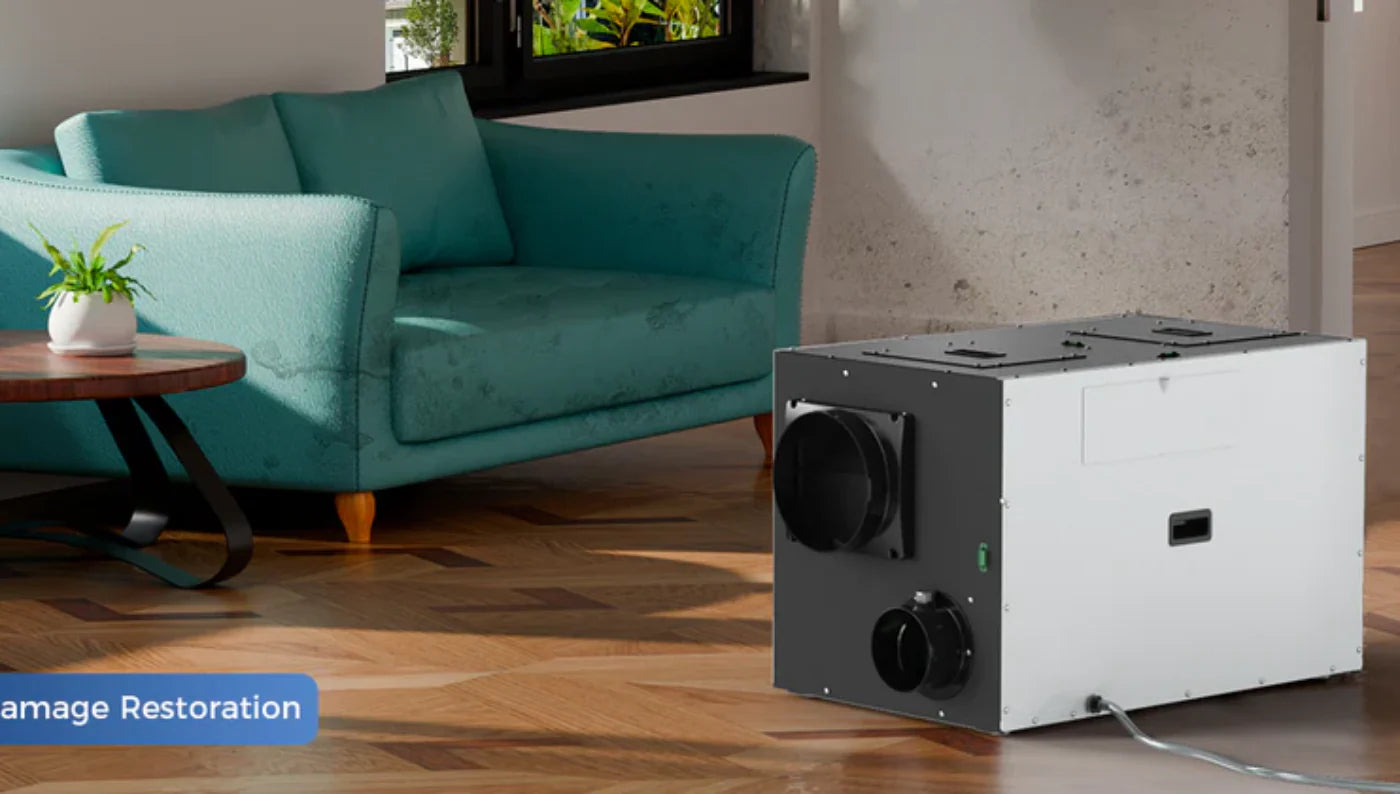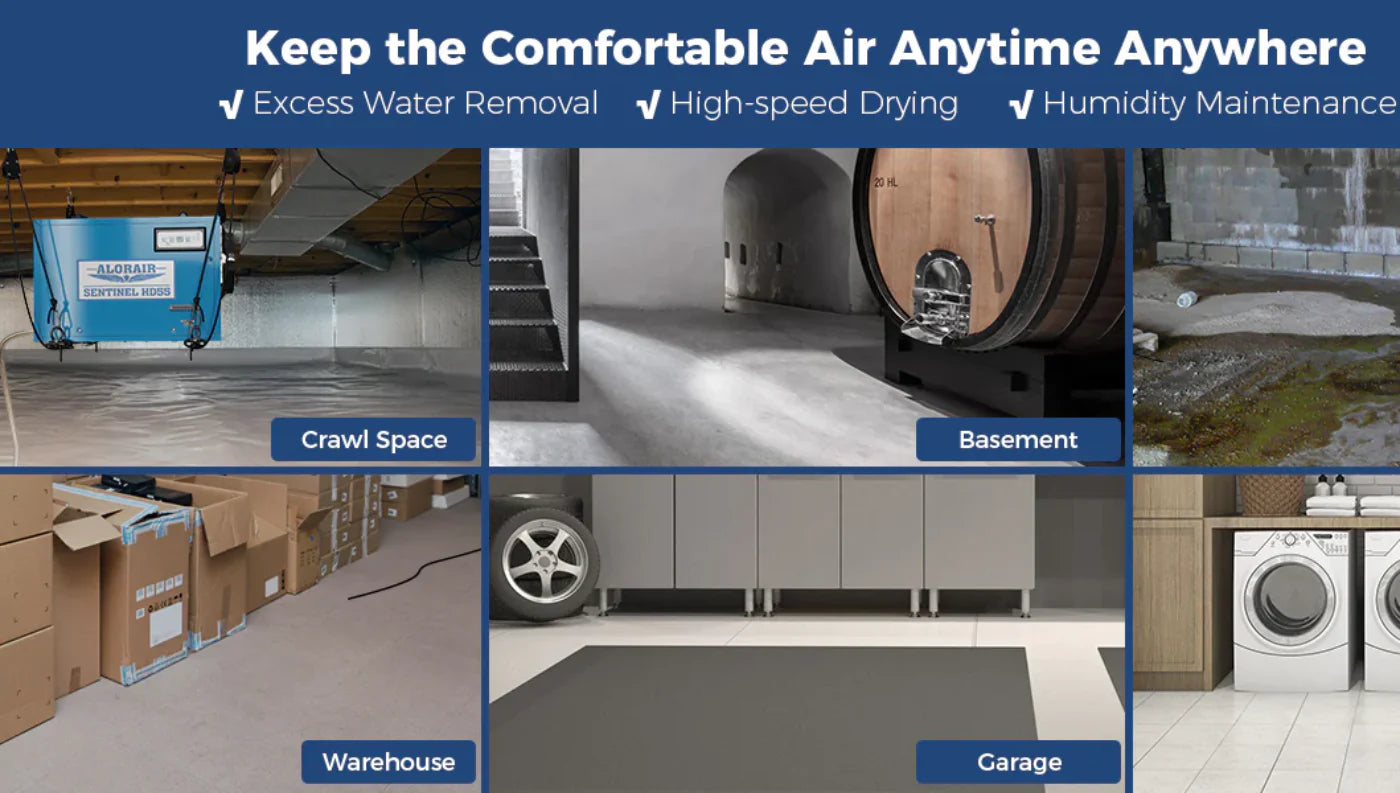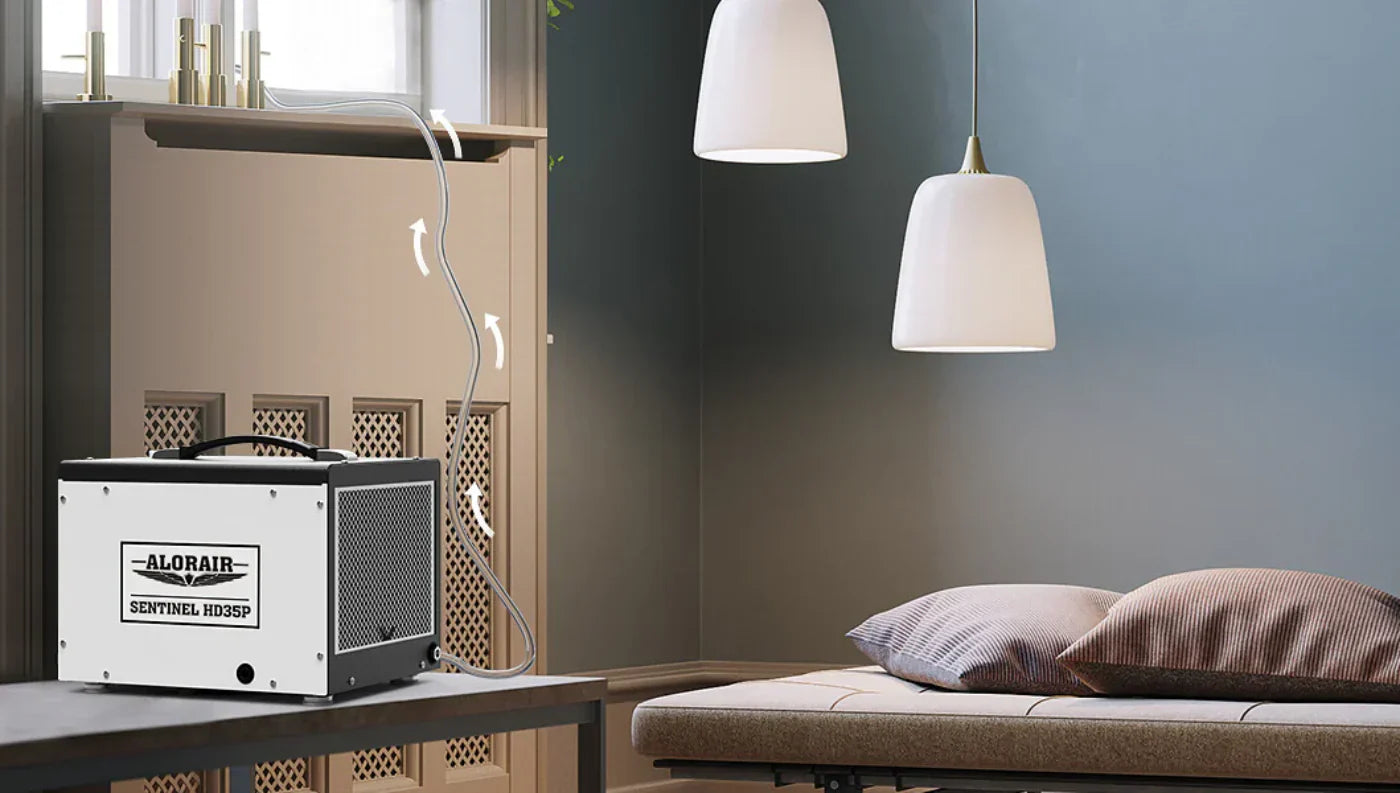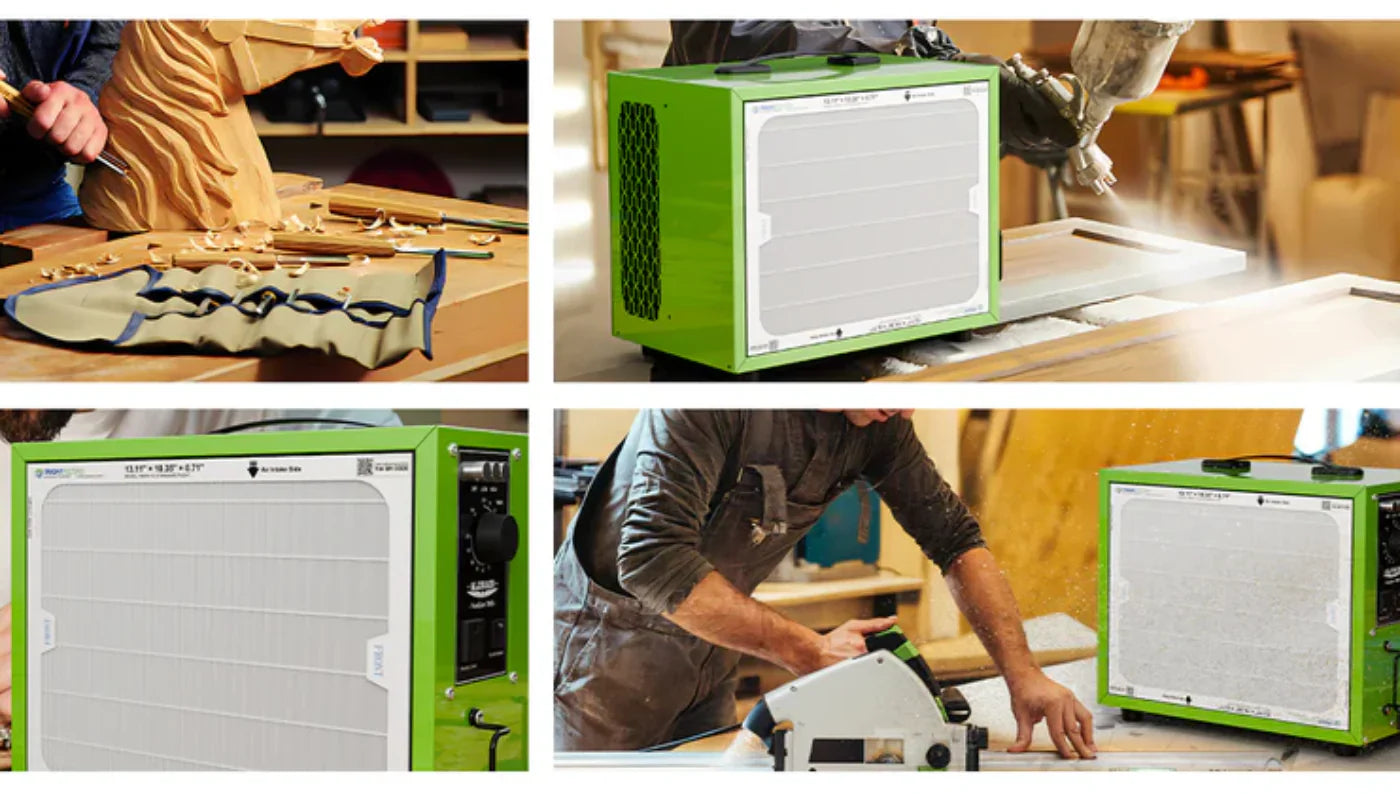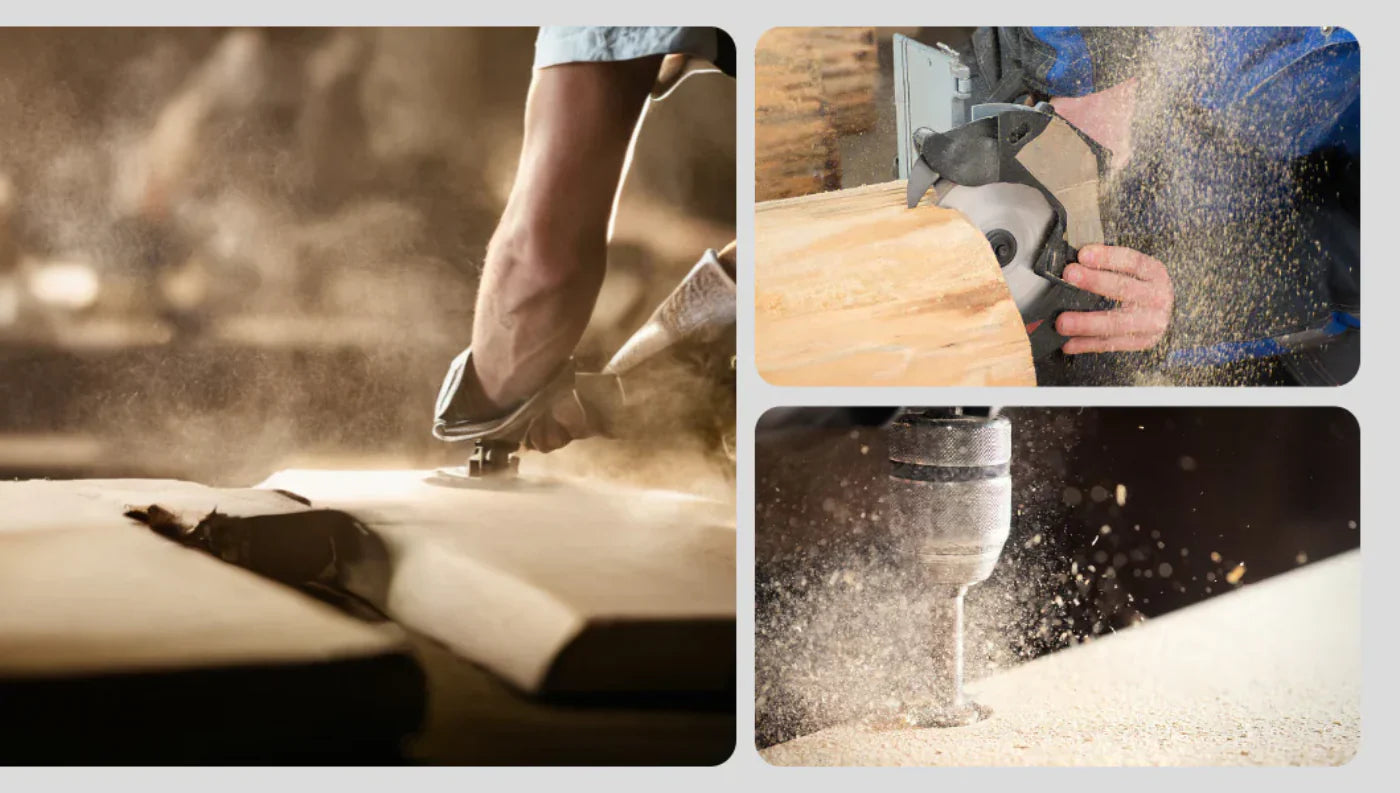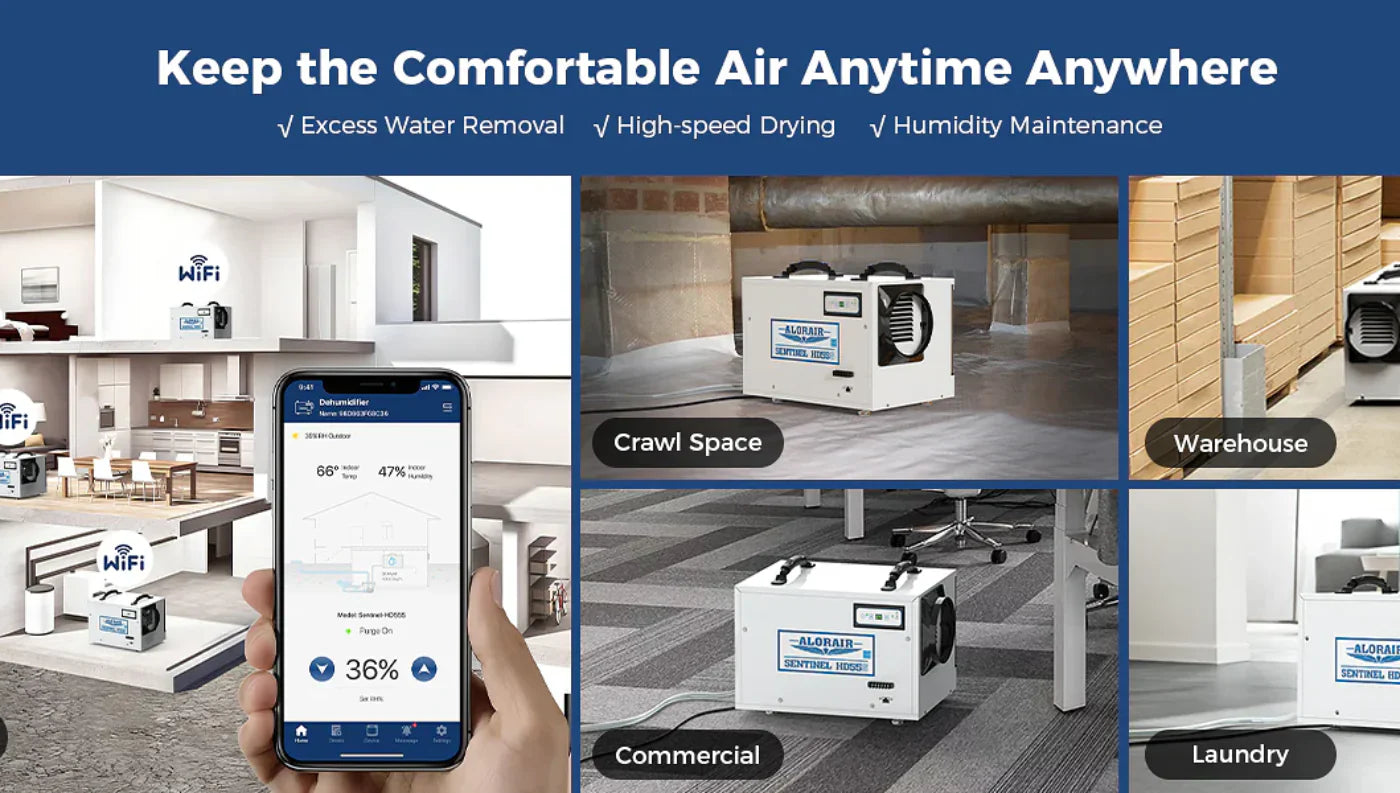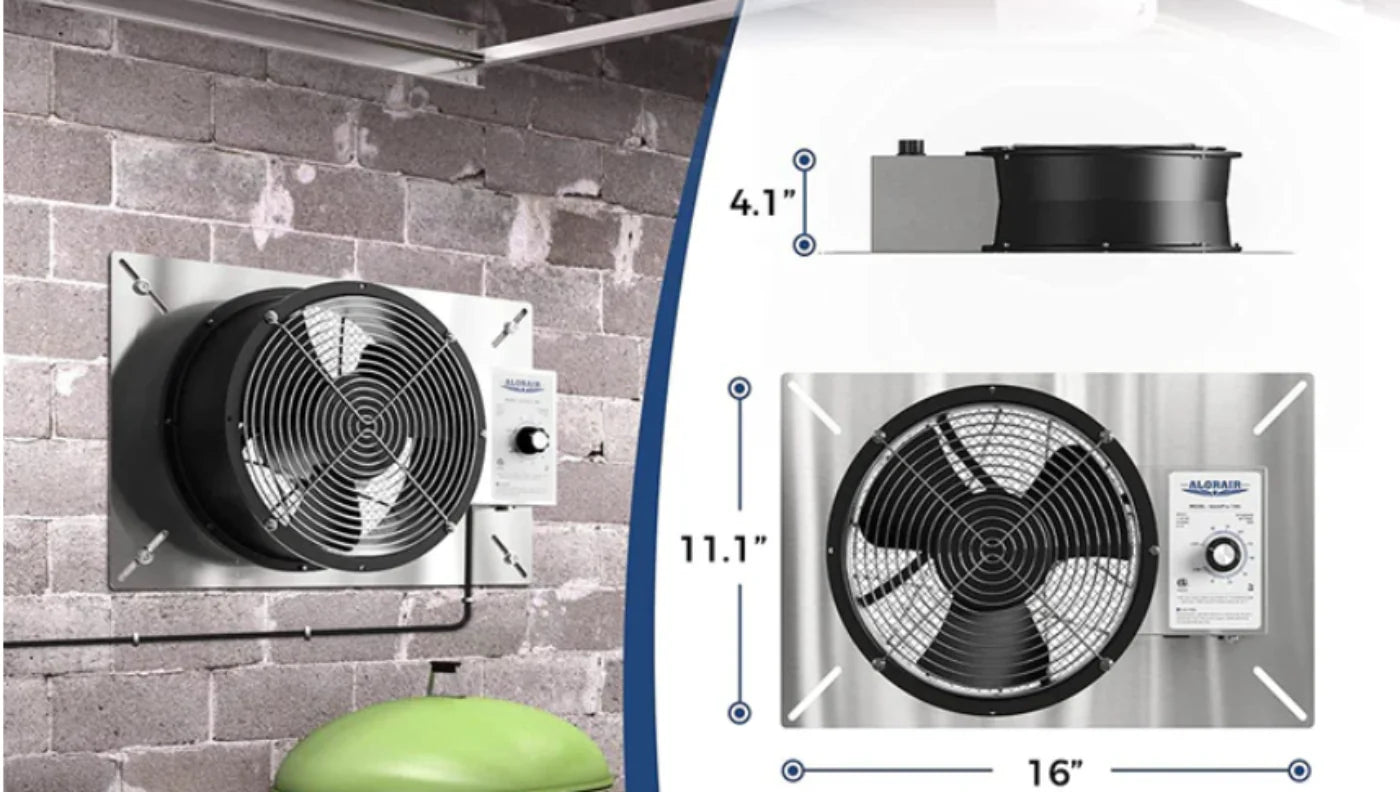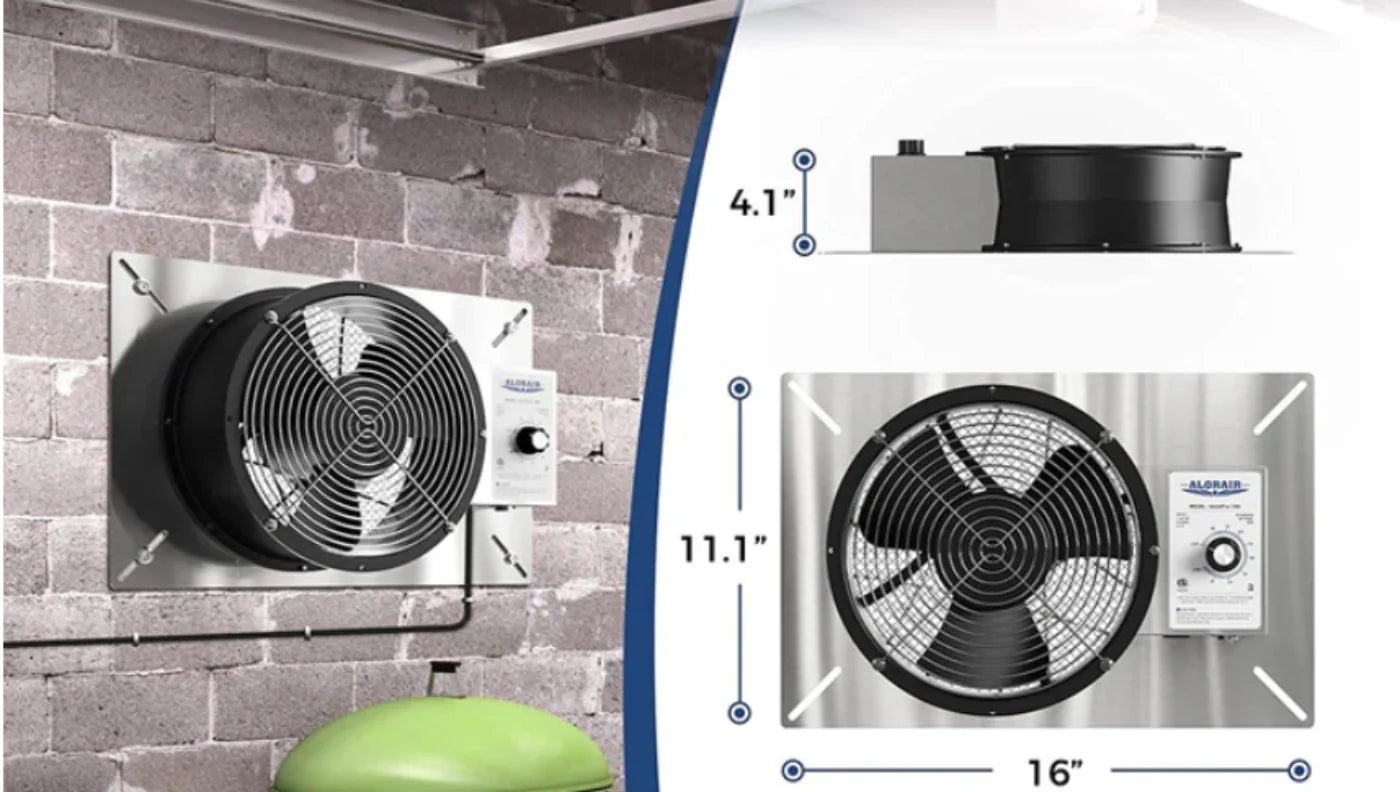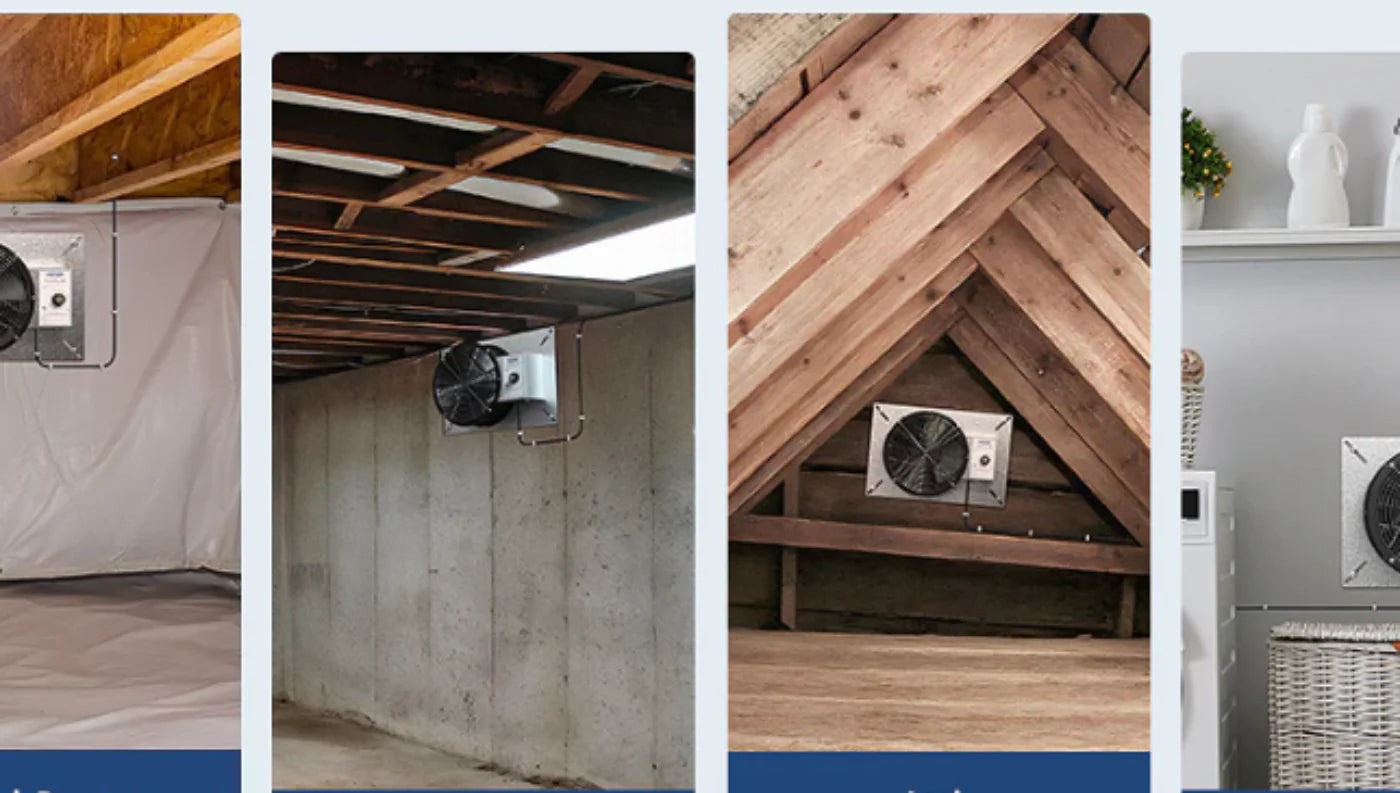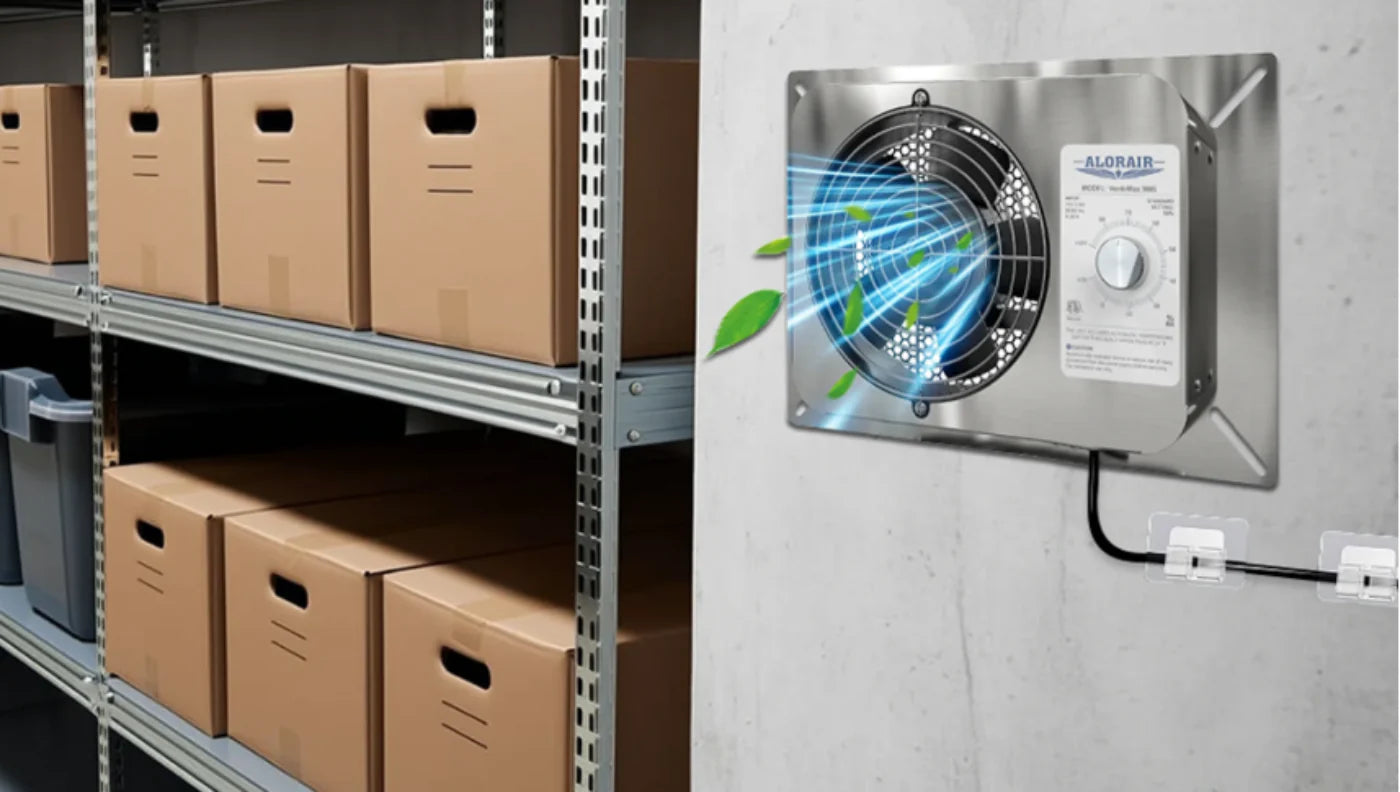Many homeowners install crawl space fans thinking they’ll dry the space and prevent mold. It sounds logical—air movement should help, right? The truth is more nuanced. Crawl space ventilation fans do work—but only in very specific conditions. In the wrong setup or climate, they can actually make moisture problems worse.
This guide breaks down how crawl space fans work, when to use them, and when a dehumidifier is the better solution. We’ll also cover humidity sensors, solar-powered fans, and what modern building science says about ventilating vs sealing crawl spaces.
Understanding What Crawl Space Fans Actually Do
A crawl space ventilation fan is designed to move air through or out of the crawl space. It’s usually mounted on an exterior vent or wall and either exhausts air out (negative pressure) or pulls outdoor air in (positive pressure).
The goal is simple: promote air exchange, reduce stale air, and—ideally—lower humidity levels.
However, fans don’t remove water from the air. They just move air around. If that air is already humid, fans can blow in even more moisture. That’s why effectiveness depends on the climate, season, and how the crawl space is sealed.
The Problem with Traditional Ventilation

For decades, homes were built with open crawl space vents to “let air breathe.” But in warm, humid regions, that outside air actually raises humidity when it enters a cool crawl space.
When warm, moist outdoor air hits the cooler surfaces under your house, the air condenses—creating damp wood, mold, and musty odors. Studies and building codes have since shifted toward sealed or encapsulated crawl spaces with mechanical drying (via a dehumidifier) instead of passive venting.
So while ventilation can sometimes help, it’s not a one-size-fits-all fix.
When Crawl Space Fans Work
1. In dry, arid climates
If outdoor air is generally drier than the crawl space, fans can help equalize humidity and keep the area from getting stagnant.
2. For radon or gas exhaust systems
Fans can move soil gases out of a crawl space as part of a radon mitigation setup.
3. After short-term flooding or water intrusion
Temporarily using fans helps speed surface drying before installing a vapor barrier or dehumidifier.
4. With proper encapsulation and controls
Some homeowners use humidistat-controlled fans that only run when humidity rises above a set point (like 60%). This prevents unnecessary air exchange when outdoor air is too damp.
When Crawl Space Fans Don’t Work—or Make Things Worse

1. In humid climates
If you live anywhere with muggy summers, outdoor air often holds more moisture than the air in your crawl space. Pulling that in makes everything wetter.
2. In vented crawl spaces with exposed soil
Without a vapor barrier, fans stir up moist air from the ground instead of drying it.
3. When used as the only moisture control
Fans don’t remove water from the air. Without a dehumidifier or encapsulation, they simply move humidity around.
4. In winter or cold regions
Cold outdoor air entering the crawl space can chill floors, raise heating bills, and cause condensation on ducts or pipes.
Crawl Space Ventilation Fan vs Dehumidifier
The key difference is that a fan moves air, while a dehumidifier removes water from the air.
If your crawl space has a moisture source (damp soil, humid air, leaky foundation), only a dehumidifier can lower the actual humidity level. Fans may provide supplemental circulation, but they won’t correct high RH readings.
|
Feature |
Ventilation Fan |
Dehumidifier |
|
Removes water vapor |
No |
Yes |
|
Controls exact RH |
No |
Yes |
|
Works in all climates |
No |
Yes |
|
Ideal for sealed/encapsulated crawl space |
Sometimes |
Yes |
|
Needs maintenance |
Low |
Moderate (filter/drain check) |
|
Electricity use |
Low |
Moderate |
|
Works with humidistat |
Yes (optional) |
Yes (built-in) |
Verdict: Fans can complement a dehumidifier, but not replace one. In most humid regions, a crawl space dehumidifier is the only reliable long-term solution.
Crawl Space Fans with Humidistats
A humidistat is a humidity sensor that turns the fan on and off based on a preset range. For example, it may activate at 60% RH and stop at 50%.
This makes fans more effective because they only run when it’s beneficial. It also prevents over-ventilation when outdoor humidity is higher than inside.
Many modern VentirPro series fans from AlorAir include built-in humidistats and thermostats for automatic control. These units adjust operation based on both humidity and temperature, ensuring optimal performance.
Solar-Powered Crawl Space Ventilation Fans
Solar-powered fans use roof-mounted panels or small external cells to power the motor. They’re popular because they require no wiring or electricity.
However, their airflow is limited compared to wired models, and they only run when sunlight is available. This means performance drops at night or on cloudy days—precisely when humidity often spikes.
Solar fans can work as part of a light-duty ventilation strategy in mild climates but are not a moisture-removal solution on their own.
When to Choose a Dehumidifier Instead
If your crawl space shows these signs, a dehumidifier is the right choice:
- Musty odors or visible mold
- Condensation on ducts or floor joists
- Wet insulation or soft wood
- RH consistently above 55–60%
- You live in a coastal, southern, or mixed-humid climate
A dedicated crawl space dehumidifier keeps the air stable regardless of outdoor conditions. Models like the AlorAir Sentinel HD35P, HD55, or Galaxy 60 maintain ~50% RH automatically, protecting the entire structure above.
Combining Fans and Dehumidifiers
In some sealed crawl spaces, using both makes sense. The dehumidifier removes moisture, while small ventilation fans help circulate dry air to corners and tight pockets.
This combination works especially well in large or irregular crawl spaces with partitions or piers that limit airflow. The key is to ensure the system remains balanced—no exterior venting that reintroduces moisture, and the dehumidifier’s RH sensor controls the overall humidity.
Expert Insight: Modern Best Practice
Today’s building science and updated codes increasingly favor encapsulated crawl spaces with mechanical dehumidification over open vents. Studies show encapsulated spaces stay 20–30% drier and reduce the risk of mold and structural damage.
Fans are now viewed as a supplement, not a primary drying method. When combined with proper sealing, drainage, insulation, and dehumidification, controlled airflow helps maintain even humidity—but it’s never the star of the show.
Frequently Asked Questions
Do crawl space ventilation fans really work?
They can, but only when the outside air is drier than inside. In humid areas, they usually make conditions worse by drawing in moist air.
Should I close my crawl space vents and use a dehumidifier instead?
Yes. Closing vents and sealing the space prevents outdoor humidity from entering. A dehumidifier then keeps the RH at a healthy 45–55% year-round.
What is a crawl space ventilation fan with a humidistat?
It’s a fan equipped with a sensor that turns on when humidity exceeds a set level. It helps maintain balance automatically and saves energy.
Are solar-powered crawl space fans effective?
They can improve air circulation but have limited airflow and only run during daylight. They’re helpful in dry climates but not for high humidity control.
Can I use both a fan and a dehumidifier?
Yes. Use the dehumidifier for moisture removal and the fan for airflow balance in larger, sealed spaces. The two work well together when properly configured.
Conclusion
Crawl space ventilation fans work—but only under the right conditions. In humid regions, fans can worsen moisture problems by pulling damp air inside. The modern, proven solution is encapsulation plus a dehumidifier, which keeps humidity steady regardless of weather.
Fans can still play a role, especially when paired with a humidistat or used for circulation in sealed systems. But if your goal is a permanently dry, mold-free crawl space, the dehumidifier is the core of the system, not the fan.




